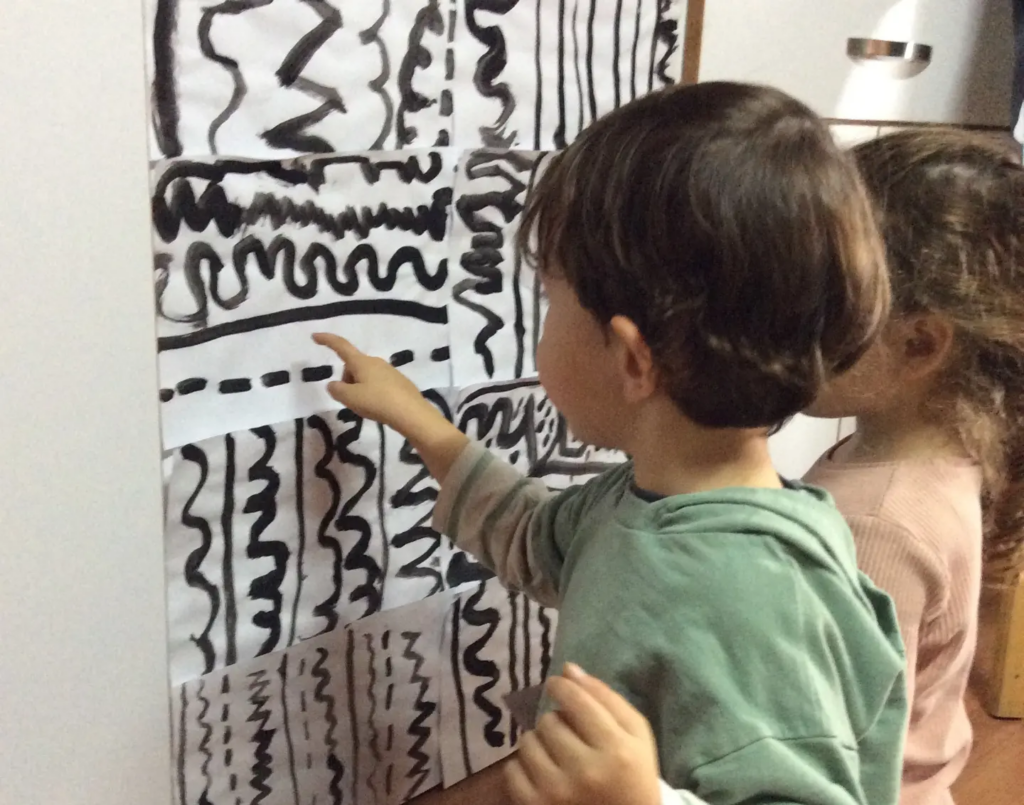The World of Children’s Drawings: Development and Creativity by Age

Children’s enthusiasm for drawing is a vital part of their efforts to understand, express, and explore the world around them. Drawing is not just an art form; it is also a powerful communication tool that contributes significantly to their cognitive and emotional development. This article delves into children’s drawing development by age, their drawing content, and their creative processes.
Ages 2–4: Exploration and Basic Shapes
At this stage, children are filled with a desire to draw as they begin developing motor skills. Their ability to hold a pencil is not yet fully developed, so their drawings often consist of large, irregular lines, circles, and spirals. This phase is one of exploration and self-expression as they make sense of their surroundings.
Their drawings typically depict family members, houses, animals, or objects they encounter in daily life. For example, when drawing “family,” they often represent their parents and themselves with simple shapes. Such drawings help them develop observation skills and reflect emotional connections. Using colors freely allows them to express their creativity, enriching their artistic expression.
During this period, integrating play and art is essential. Colorful pencils, paints, and various surfaces encourage exploration and experimentation. Challenges they face during drawing help develop problem-solving skills.
Ages 4–6: Representational Drawing Phase
Children between 4 and 6 years old begin adding more detail and meaning to their drawings. This stage marks the emergence of representational drawings and heightened imagination. They start drawing objects and figures with better proportions. For example, when drawing people, they distinguish between body parts such as heads, torsos, arms, and legs.
At this age, children often use their drawings to tell stories. For instance, in a family portrait, they might use symbols or colors to represent each person. They also depict outdoor scenes and natural elements with more detail, adding trees, the sun, and animals shaped by their imagination.
Organizing art activities is crucial to supporting their artistic expression. Activities like free drawing, collage-making, or experimenting with different materials enhance creativity. Participating in artistic processes boosts self-expression and builds confidence.
Ages 6–8: Detail and Expression
Between 6 and 8 years old, children’s drawing skills become more refined. Their observation skills improve, enabling them to notice details and incorporate them into their drawings. They begin exploring artistic concepts such as perspective, proportion, and depth.
At this stage, children strengthen their storytelling abilities through drawings. They might illustrate sequences, such as children playing in a park or interacting with animals. They also create scenes with original characters and weave stories around them.
Children at this age often engage in projects that incorporate social, emotional, and cultural themes. Working on group projects with peers fosters collaboration and social skills. Discussions during drawing activities encourage creative thinking and idea-sharing.
Ages 8 and Above: Development of Personal Style
From the age of 8 onward, children begin developing their unique artistic styles. This period sees a shift toward more complex and abstract drawings. Children become eager to explore different techniques and forms of art, often branching out beyond drawing.
They start expressing their personal experiences, thoughts, and emotions through their artwork. Their drawings often reflect themes of social justice, environmental protection, and other issues they care about.
Children may also show interest in art history and various artistic movements. Learning about different artists and styles inspires them to incorporate new elements into their work. This process enhances their critical thinking and enriches their artistic skills.
Supporting Art Education
Parents and educators play a vital role in nurturing children’s drawing journeys. The following strategies can support their creativity:
– Provide Free Time: Allow children the freedom to create independently or with friends, fostering independent thinking.
– Offer Diverse Materials:Provide various art supplies like paints, pencils, scissors, and glue to encourage exploration of different techniques.
– Organize Art Activities: Group projects or workshops enhance social skills while teaching collaboration.
– Create an Environment for Free Expression: Offer positive feedback to support creativity and boost self-confidence.
– Introduce Art History: Sharing information about different art movements and artists broadens their artistic perspective.
Conclusion: Drawing as a Journey of Discovery
Children’s journey in drawing plays a crucial role in their cognitive and emotional growth. At each stage, they explore different subjects, styles, and techniques. Their drawings offer a window into how they perceive the world and express themselves.
Every drawing is an act of discovery and expression. Supporting children’s artistic journeys fosters their individual and social development. Each artwork reflects the imagination and skills of a budding artist. Encouraging and nurturing this creativity lays the foundation for future artistic expression. Drawing is not just an art form; it is a means of expressing the colors, emotions, and dreams of life.









